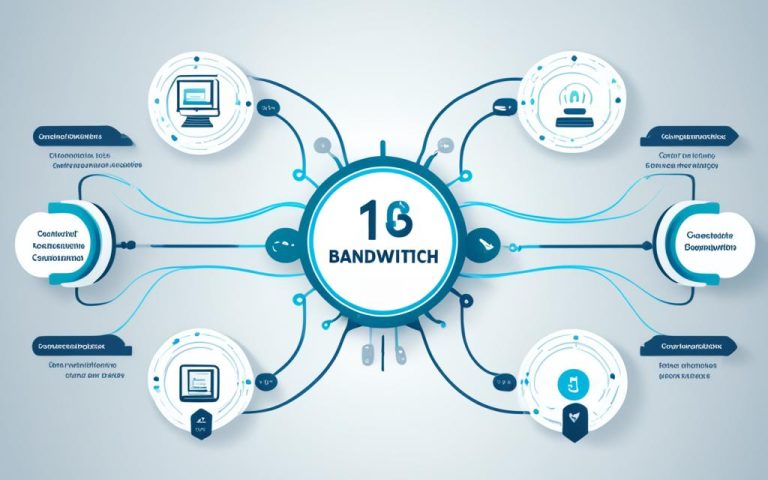In today’s digital age, data privacy has become a paramount concern for individuals and organizations alike. With the increasing reliance on wireless networks and Personal Area Networks (PANs), it is crucial to implement robust security measures to safeguard sensitive information. Encryption, as a fundamental security mechanism, plays a pivotal role in ensuring data privacy and protection.
Encryption methods in PANs serve as a shield against unauthorized access and data breaches. By encrypting data, it becomes incomprehensible to any individual or entity without the decryption key, providing confidentiality and preventing unauthorized decryption. Additionally, encryption ensures the integrity of data by detecting any alterations or modifications to the transmitted information.
Commonly used encryption methods in PANs include Wired Equivalent Privacy (WEP), Wi-Fi Protected Access 2 (WPA2), and the upcoming WPA3 standard. These encryption protocols establish secure communication channels, authenticate devices, and protect against various cyber threats.
As technology continues to evolve, so do the methods employed by malicious actors. It is imperative to stay informed about emerging encryption standards and best practices to stay ahead in the battle for data privacy and security.
The Importance of Encryption in Wireless Networks
Wireless networks have become an integral part of our lives, allowing us to connect to the internet and share information conveniently. However, with this increased connectivity comes the need for robust security measures to protect sensitive data from unauthorized access. This is where encryption plays a crucial role.
Encryption is a fundamental component of wireless network security, addressing various security concerns such as eavesdropping, man-in-the-middle attacks, and denial-of-service attacks. By encrypting messages, encryption ensures confidentiality, preventing unauthorized decryption and maintaining the privacy of transmitted data.
In addition to confidentiality, encryption also ensures the integrity of data. It prevents unauthorized modification or tampering by providing mechanisms that protect the data from being altered in transit. This helps to maintain the trustworthiness and reliability of the information being transmitted.
Furthermore, encryption contributes to the authentication process in wireless networks. By using cryptographic algorithms, it enables the verification of the identities of the sender and receiver. This authentication mechanism ensures that the intended recipients receive the information securely, minimizing the risk of unauthorized parties gaining access to the network.
“Encryption is vital in wireless networks as it addresses security concerns, maintains data confidentiality and integrity, and contributes to the authentication process.”
In summary, encryption is of utmost importance in wireless networks for ensuring data privacy and protecting against potential security threats. It safeguards sensitive information, prevents unauthorized access, and maintains the reliability and trustworthiness of data transmission.
Next, let’s explore the common encryption methods used in Personal Area Networks (PANs).
Common Encryption Methods in PANs
When it comes to securing Personal Area Networks (PANs), encryption methods play a vital role in protecting sensitive data. In this section, we will explore the most commonly used encryption methods in PANs, including Wired Equivalent Privacy (WEP), Wi-Fi Protected Access 2 (WPA2), and the upcoming WPA3.
WEP: The First Mechanism for Confidentiality
WEP was the first encryption method introduced for wireless networks. Although outdated and prone to vulnerabilities, it paved the way for implementing security measures in PANs. It utilizes a 64-bit or 128-bit encryption key to protect data confidentiality.
WPA2: Current Default Encryption Configuration
Currently, WPA2 is the default encryption configuration for Wi-Fi networks. It offers improved security compared to WEP and provides stronger encryption algorithms for data protection. WPA2 implements the Advanced Encryption Standard (AES) algorithm, which ensures robust confidentiality.
WPA3: Next Generation Wi-Fi Security
With the increasing need for enhanced security, WPA3 emerges as the next generation of Wi-Fi security protocols. It provides advanced encryption methods and introduces several new features to protect PANs from various attacks. WPA3 ensures stronger data protection, even against brute-force attacks.
To further enhance security on public Wi-Fi networks, users can utilize a Virtual Private Network (VPN). A VPN establishes a secure and encrypted connection between the user’s device and the intended network, ensuring data confidentiality and integrity.
By implementing these PAN encryption methods, individuals and organizations can safeguard their data and maintain a secure wireless environment. In the next section, we will discuss tips for securing wireless connections and PANs to reinforce data privacy and protect against potential threats.
Tips for Securing Wireless Connections and PANs
To ensure the security of your wireless connections and Personal Area Networks (PANs), it is essential to follow certain best practices. By implementing these measures, you can protect against unauthorized access and potential hacking attempts. Here are some valuable tips:
- Change default passwords: One of the first steps to secure your wireless connections and PANs is to change the default passwords of your devices. Default passwords are often easily accessible to attackers, so creating strong, unique passwords is crucial.
- Enable encryption: Enable encryption on your wireless network, using protocols such as WPA2 or higher. Encryption ensures that data transmitted over your network is protected and cannot be easily intercepted by unauthorized individuals.
- Disable SSID broadcasting: By disabling SSID broadcasting, you can make your wireless network less visible to potential attackers. This adds an extra layer of security by preventing your network from being easily discovered.
- Enable MAC address filtering: MAC address filtering allows you to specify which devices are allowed to connect to your network. By adding the MAC addresses of your trusted devices to a whitelist, you can prevent unauthorized devices from accessing your PAN.
- Keep software and firmware updated: Regularly update the software and firmware of your wireless devices, including routers and connected devices. Updates often include security patches that address vulnerabilities and enhance overall security.
- Use a VPN for added security: Consider using a Virtual Private Network (VPN) to secure your wireless connections. A VPN encrypts all data transmitted between your device and the internet, ensuring privacy and protecting against potential eavesdropping.
By following these tips, you can significantly enhance the security of your wireless connections and PANs, safeguarding your data and maintaining the privacy of your network.
| Security Tip | Description |
|---|---|
| Change default passwords | Create strong, unique passwords to replace default ones. |
| Enable encryption | Use protocols like WPA2 or higher to encrypt your network. |
| Disable SSID broadcasting | Make your network less visible by disabling SSID broadcasting. |
| Enable MAC address filtering | Filter allowed devices by adding MAC addresses to a whitelist. |
| Keep software and firmware updated | Regularly update devices to patch security vulnerabilities. |
| Use a VPN | Utilize a VPN to encrypt data and protect privacy. |
Implementing these security measures will provide peace of mind and ensure the integrity of your wireless connections and PANs.

Understanding Symmetric and Asymmetric Encryption
Encryption plays a vital role in safeguarding data, especially in wireless networks and Personal Area Networks (PANs). There are two main types of encryption: symmetric and asymmetric. Let’s explore each type in detail.
Symmetric Encryption
Symmetric encryption utilizes a single secret key for both encryption and decryption processes. This means that the same key is used by the sender to encrypt the data and by the receiver to decrypt it. The key must be kept confidential to ensure the security of the information.
Common symmetric encryption algorithms include:
- Advanced Encryption Standard (AES) – AES is a widely used and highly secure encryption algorithm that provides robust protection for data.
- Data Encryption Standard (DES) – Although considered somewhat outdated, DES still offers a level of security for certain applications.
Asymmetric Encryption
Asymmetric encryption, also known as public-key encryption, involves the use of a pair of keys – a public key and a private key. The public key is used for encryption, while the private key is used for decryption. The public key can be freely distributed, allowing anyone to encrypt data, while the private key remains confidential and is only accessible to the intended receiver for decryption.
Examples of asymmetric encryption algorithms include:
- Rivest Shamir Adleman (RSA) – RSA is a widely used encryption algorithm known for its security and versatility.
- Elliptic Curve Cryptography (ECC) – ECC is a modern encryption algorithm that offers shorter key lengths and enhanced security compared to RSA.
By understanding the differences between symmetric and asymmetric encryption, individuals and organizations can make informed decisions when it comes to securing their data and maintaining privacy.
| Encryption Type | Key Usage | Examples |
|---|---|---|
| Symmetric Encryption | Single secret key for encryption and decryption | Advanced Encryption Standard (AES), Data Encryption Standard (DES) |
| Asymmetric Encryption | Pair of keys – public key for encryption, private key for decryption | Rivest Shamir Adleman (RSA), Elliptic Curve Cryptography (ECC) |
Common Encryption Algorithms and Techniques
Various encryption algorithms and techniques are used to secure data in personal area networks (PANs) and wireless networks. These encryption methods play a crucial role in maintaining data confidentiality, integrity, and authentication. Let’s explore some of the commonly used encryption algorithms and techniques:
1. Advanced Encryption Standard (AES)
AES is widely regarded as one of the most secure encryption algorithms available today. It is a symmetric encryption algorithm that employs block ciphers to encrypt and decrypt data. AES supports key lengths of 128, 192, and 256 bits, providing strong protection against unauthorized access.
2. Triple Data Encryption Standard (TDES)
TDES is an enhanced version of the Data Encryption Standard (DES) algorithm. It employs multiple encryption stages to increase the security level. TDES is often used in scenarios where legacy systems require compatibility with the original DES algorithm while offering improved protection.
3. RSA (Rivest Shamir Adleman)
RSA is an asymmetric encryption algorithm that uses a pair of keys – a public key for encryption and a private key for decryption. It is widely used for secure data transmission and authentication in various applications. RSA’s strength lies in its ability to securely exchange keys between the communicating parties.
4. Elliptic Curve Cryptography (ECC)
ECC is another asymmetric encryption method that relies on the mathematics of elliptic curves. It offers the same level of security as RSA but with smaller key sizes, making it more efficient in terms of processing power and memory usage. ECC is commonly used in resource-constrained environments.
5. Blowfish and Twofish
Blowfish and Twofish are symmetric encryption algorithms known for their flexibility, speed, and high security. Blowfish uses variable-length key sizes and operates on 64-bit blocks. Twofish, an improved version of Blowfish, supports larger block sizes and key sizes, providing enhanced security.
| Encryption Algorithm | Type | Key Length | Usage |
|---|---|---|---|
| AES | Symmetric | 128, 192, 256 bits | Widely used in various applications |
| TDES | Symmetric | 168 bits | Legacy systems requiring compatibility with DES |
| RSA | Asymmetric | Varies (typically 1024, 2048, or 4096 bits) | Data transmission and authentication |
| ECC | Asymmetric | Varies (typically 128-521 bits) | Resource-constrained environments |
| Blowfish | Symmetric | 32-448 bits | Flexibility and speed in encryption |
| Twofish | Symmetric | 128-256 bits | Enhanced security in encryption |
These encryption algorithms and techniques provide a strong foundation for secure data transmission and protection in PANs and wireless networks.
By implementing robust encryption mechanisms like AES, TDES, RSA, ECC, Blowfish, and Twofish, individuals and organizations can ensure the confidentiality and integrity of their sensitive data.
Conclusion
Ensuring data security in wireless networks and Personal Area Networks (PANs) is of utmost importance in today’s digital landscape. Encryption methods, such as WPA2, play a crucial role in protecting sensitive information from unauthorized access. By implementing robust encryption protocols, individuals and organizations can maintain the confidentiality, integrity, and authenticity of their data.
It is essential to stay updated with emerging encryption standards and best practices to stay one step ahead of cyber threats. Regularly updating software and firmware, using strong and unique passwords, and enabling encryption are fundamental steps towards enhancing data security in wireless networks. Additionally, applying encryption methods like WPA2 ensures that data transmitted within PANs remains protected from potential eavesdropping and unauthorized interception.
With the growing reliance on wireless networks and the increasing presence of PANs in various sectors, including healthcare, finance, and smart homes, prioritizing data security is paramount. By adopting encryption protocols and maintaining awareness of data privacy measures, individuals and organizations can safeguard their valuable data and mitigate potential security risks.
FAQ
What is encryption and why is it important?
Encryption is a security mechanism used to protect data in wireless networks and personal area networks (PANs). It ensures confidentiality, integrity, and authentication of transmitted data, addressing security concerns such as eavesdropping and man-in-the-middle attacks. Encryption is important to safeguard sensitive information and maintain data privacy.
What are the common encryption methods used in PANs?
Common encryption methods used in PANs include Wired Equivalent Privacy (WEP), Wi-Fi Protected Access 2 (WPA2), and the upcoming WPA3 standard.
What is the difference between WEP, WPA2, and WPA3?
WEP, although outdated, was the first mechanism used for confidentiality in wireless networks. WPA2 is the current default encryption configuration for Wi-Fi networks and offers more secure encryption. WPA3 is the next generation of Wi-Fi security and provides enhanced levels of security.
How can I secure my wireless connections and PANs?
To secure your wireless connections and PANs, follow these best practices:
1. Change default passwords
2. Enable encryption (WPA2 or higher)
3. Disable SSID broadcasting
4. Enable MAC address filtering
5. Keep software and firmware updated
6. Use a Virtual Private Network (VPN) for added security
What are the types of encryption?
Encryption can be categorized into two types: symmetric and asymmetric. Symmetric encryption uses a single secret key for both encryption and decryption, while asymmetric encryption uses a pair of keys – a public key for encryption and a private key for decryption.
What are some common encryption algorithms?
Some common encryption algorithms include Advanced Encryption Standard (AES), Data Encryption Standard (DES), Rivest Shamir Adleman (RSA), Elliptic Curve Cryptography (ECC), Blowfish, and Twofish. These algorithms provide varying levels of security and are used to secure data in wireless networks and PANs.
How does encryption contribute to data security in PANs?
Encryption plays a vital role in safeguarding data in wireless networks and PANs. By implementing encryption methods like WPA2, using strong passwords, and keeping software up to date, individuals and organizations can protect their data from unauthorized access, eavesdropping, and other security threats.



















